Themed collection Microbial Metallomics

Contents list
Microbial Metallomics
This editorial introduces the Microbial Metallomics themed issue, guest edited by Partha Basu.

Metallomics, 2013,5, 274-275
https://doi.org/10.1039/C3MT90009F
Conserving energy with sulfate around 100 °C – structure and mechanism of key metal enzymes in hyperthermophilic Archaeoglobus fulgidus
Sulfate-reducing bacteria and archaea are important players in the biogeochemical sulfur cycle.
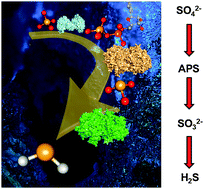
Metallomics, 2013,5, 302-317
https://doi.org/10.1039/C2MT20225E
Imposing function down a (cupin)-barrel: secondary structure and metal stereochemistry in the αKG-dependent oxygenases
The Fe(II)/αketoglutarate (αKG) dependent oxygenases catalyze a diverse range of reactions significant in biological processes such as antibiotic biosynthesis, lipid metabolism, oxygen sensing, and DNA and RNA repair.
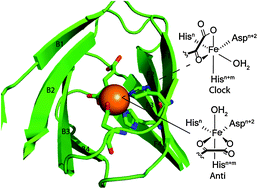
Metallomics, 2013,5, 287-301
https://doi.org/10.1039/C3MT20153H
Iron-responsive bacterial small RNAs: variations on a theme
Variations in bacterial iron-responsive small RNA function are intimately linked to the lifestyle of the bacteria that encode them.
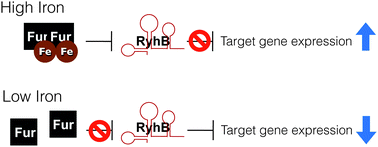
Metallomics, 2013,5, 276-286
https://doi.org/10.1039/C3MT20224K
Campylobacter jejuni ferric–enterobactin receptor CfrA is TonB3 dependent and mediates iron acquisition from structurally different catechol siderophores
C. jejuni exploits a large variety of catechol siderophores for growth and most depend on either the CfrA transporter or the TonB3 energy transduction system for their use.

Metallomics, 2013,5, 988-996
https://doi.org/10.1039/C3MT20254B
Effect of aluminium and copper on biofilm development of Pseudomonas pseudoalcaligenes KF707 and P. fluorescens as a function of different media compositions
The toxicity of a metal towards bacteria is dependent upon a three-way interaction between the metal, the bacterium and the physicochemical properties of the environment/media.
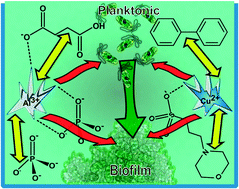
Metallomics, 2013,5, 723-735
https://doi.org/10.1039/C3MT20240B
The BaeSR regulon is involved in defense against zinc toxicity in E. coli
Intracellular zinc concentration fluxes demonstrate that proteins in the BaeSR regulon (MdtABC, MdtD and Spy) are important for zinc detoxification.
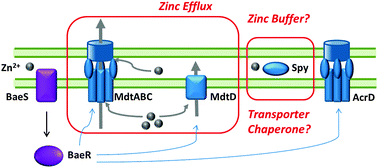
Metallomics, 2013,5, 372-383
https://doi.org/10.1039/C3MT20217H
Exposure of Bacillus subtilis to mercury induces accumulation of shorter tRNACys species
The effects of mercury on tRNA metabolism are investigated using Northern blotting with wild type, single and double mutants of RNases in Bacillus subtilis and CVAAS.
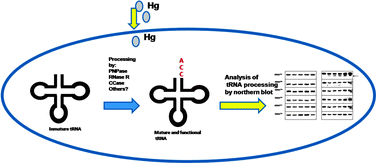
Metallomics, 2013,5, 398-403
https://doi.org/10.1039/C3MT20203H
Aerobic uranium immobilization by Rhodanobacter A2-61 through formation of intracellular uranium–phosphate complexes
Rhodanobacter A2-61 can actively grow aerobically in the presence of U, and can efficiently remove U(VI) and inorganic phosphate from the environment, accumulating them inside the cell in complexes, that corresponds to effective metal immobilization.
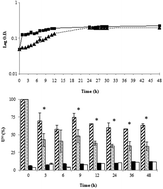
Metallomics, 2013,5, 390-397
https://doi.org/10.1039/C3MT00052D
A copper hyperaccumulation phenotype correlates with pathogenesis in Cryptococcus neoformans
Cellular metal analysis reveals that the virulence of Cryptococcus neoformans depends upon its ability to acquire unusually high copper concentrations during infection.
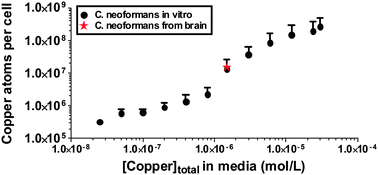
Metallomics, 2013,5, 363-371
https://doi.org/10.1039/C3MT20220H
Streptococcus pneumoniae requires iron for its viability and expresses two membrane proteins that bind haemoglobin and haem
Streptococcus pneumoniae, a human pathogen bacterium, can support its growth using haemoglobin (Hb) and haem as sole iron sources, but not when holo-transferrin is supplied.
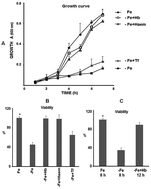
Metallomics, 2013,5, 384-389
https://doi.org/10.1039/C3MT20244E
Co(II)-detection does not follow Kco(II) gradient: channelling in Co(II)-sensing
Cobalt sensing CoaR has the weakest affinity for cobalt among a set of metal sensors from the same cell, indicating a kinetic contribution to metal-selectivity.

Metallomics, 2013,5, 352-362
https://doi.org/10.1039/C3MT20241K
Selenite and tellurite form mixed seleno- and tellurotrisulfides with CstR from Staphylococcus aureus
The sulfite sensor from Staphylococcus aureus reacts with the related chalcogen oxyanion selenite to form a novel intersubunit selenotrisulfide linkage.
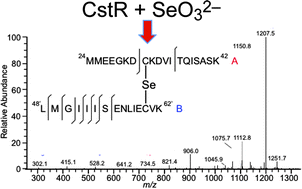
Metallomics, 2013,5, 335-342
https://doi.org/10.1039/C3MT20205D
The Porphyromonas gingivalis HmuY haemophore binds gallium(III), zinc(II), cobalt(III), manganese(III), nickel(II), and copper(II) protoporphyrin IX but in a manner different to iron(III) protoporphyrin IX
Porphyromonas gingivalis HmuY binds non-iron metalloporphyrins but in a manner different to haem which might be exploited to reduce the virulence of this bacterium.
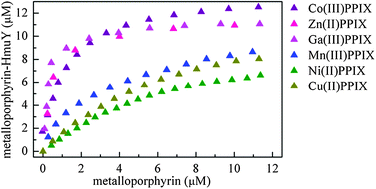
Metallomics, 2013,5, 343-351
https://doi.org/10.1039/C3MT20215A
The molybdoproteome of Starkeya novella – insights into the diversity and functions of molybdenum containing proteins in response to changing growth conditions
The metabolic versatility of the soil bacterium Starkeya novella is underpinned by a variety of novel mononuclear Mo enzymes, many of which show growth mode dependent expression.

Metallomics, 2013,5, 325-334
https://doi.org/10.1039/C2MT20230A
Cold-adapted arsenite oxidase from a psychrotolerant Polaromonas species
The cold-adapted arsenite oxidase is more active and less thermostable than its mesophilic homologues, which can be explained by its increased flexibility and a reduction in the hydrophobicity of the core.
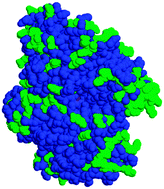
Metallomics, 2013,5, 318-324
https://doi.org/10.1039/C2MT20180A
About this collection
A collection of papers highlighting fundamental work and new developments in the emerging high-impact area of research on the role of metals in microbial systems.